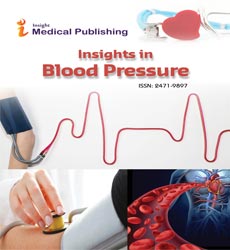Abstract
Endoscopic vs. Medical Therapy for Bleeding Peptic Ulcers with Adherent Clot: A Randomized Comparative Trial
Upper gastrointestinal bleeding is the most common and potentially life threatening emergency. Despite great advances in the field of medicine, the optimal management of bleeding peptic ulcer with adherent clot on endoscopy is still controversial. The aim of this study is to compare the combined endoscopic and medical therapy with medical therapy alone for bleeding peptic ulcer with adherent clot (Forrest type IIB). During two-year study period, around 342 patients presented to our Tertiary care hospital with acute upper gastrointestinal bleeding. Out of these, 81 patients were noted to have adherent clot (Forrest type IIB) during endoscopy and were included in study. 40 patients received combined endoscopic and medical treatment, whereas 41 patients received medical treatment only. The base line characteristics of patients in two groups were comparable and statistically significant. Primary Outcome being recurrence of bleeding within 7 days of treatment was less in combined therapy group compared to medical therapy group (2.5% vs. 17.1%) This was statistically significant. Secondary outcome like recurrence of bleed in 30 days and need for repeat endoscopy were less in combined group compared to medical therapy group. These were statistically significant as well. Other secondary outcomes like necessity for surgery and mortality were fewer in combined group, but these were not statistically significant. In conclusion combination endoscopic therapy consisting of epinephrine injection, removal of the adherent clot, and treatment of underlying stigmata is more effective than medical therapy alone.
Introduction Upper gastrointestinal bleeding (UGIB) is common and potentially life-threatening
gastrointestinal emergency. ÃÆÃÂÃâÃÂe annual incidence of hospitalization for acute UGIB is 1 per 1000 people in Americawith a mortality rate of 7% to 10% Upper gastrointestinal Endoscopy (EGD) is the prime diagnostic and therapeutic tool for UGIB It precisely delineates the bleeding site and determines the specLfic cause. EGD is 90% to 95% diagnostic for acute UGIB [4]. Patients aÃÆââ¬ËÃâââ¬âer initial resuscitation should undergo early endoscopy (within 24 hours). It helps to identify stigmata of recent hemorrhage (SRH), in patients with underlying peptic ulcer disease. Patient with high risk SRH like active bleed or visible vessel needs endoscopic intervention to reduce morbidity and mortality ]
with a clean base or with a flat pigmented spot have a low risk of rebleeding and do not require endoscopic- therapy . Ulcers with adherent clot carry 8 to 36 percent risk of rebleeding optimal management of ulcers with adherent clot is controversial. Endoscopic therapies include injection, ablation, and mechanical therapy. ÃÆÃÂÃâÃÂe above three endoscopic therapies are eÃÆââ¢Ãâââ¬ÂÃÆââ¢ÃâÃâ ectLve as monotherapies, but combined therapies increase the eÃÆââ¢Ãâùcacy Proton pump inhibitor (PPI) therapy is recommended for patients with acute UGIB. ÃÆÃÂÃâÃÂLs therapy reduces the severity of SRH at endoscopy and reduces the need for endoscopic therapy as compared with no treatment or histamine-2 antagonist (H2 Blocker) therapy . PPI therapy modestly reduces the risk for rebleeding, need for surgery, and blood transfusions, however so far hasn’t shown to reduce mortality .ÃÆÃÂÃâÃÂe benefit is greatest in patients who have high risk SRH, such as a visible vessel. Although intravenous infusion is ideal, oral PPI therapy provides much of the benefit .ÃÆÃÂÃâÃÂe rationale for PPI therapy is that most common causes of UGIB, including ulcers, gastritis, duodenitis and hemorrhagic reflux
esophagitis are medically treated with acid-suppressive therapy. PPI therapy is also useful for hemostasis, by neutralization of intraluminal gastric acid it promotes stabilizing of blood clots . Omeprazole has been the most extensively studied intravenous PPI, others are Pantoprazole and esomeprazole. ÃÆÃÂÃâÃÂe suggested dose of intravenous pantoprazole is 80 mg bolus followed by 8 mg/hr infusion. Omeprazole and esomeprazole have also been used as 80 mg boluses followed by 8 mg/hr infusions. ÃÆÃÂÃâÃÂe infusion is usually continued for 72 hours. If there is no rebleeding the patient may be switched to oral pantoprazole 40 mg/day or omeprazole 20 mg/day. Till date, the management of ulcers containing adherent clots has been controversial. Some investigators do not recommend endoscopic therapy for patients with non-bleeding adherent clots because of the potential to induce severe haemorrhage In contrast, others advocate removal of the overlying clot and treatment of underlying stigmata for patients with adherent clot in an ulcer base [ Two recently published randomized, controlle0d trials have shown that injection of epinephrine followed by removal of adherent clot and treatment of underlying stigmata sLJnLficantOy reduced the rate of recurrent ulcer bleeding when compared with leaving the clot undisturbed However later on meta-analysis found no clear evidence for need of specLfic endoscopic interventions in patients with an adherent clot Rasheed et al., J HepatolGastroint Dis 2017, 3:3 DOI: 10.4172/2475-3181.1000150 Research Article J HepatolGastroint Dis, an open access journal ISSN:2475-3181 Volume 3 •
Author(s):
Ajaz Ahmad Telwani, Azhar Hafiz Baba, Mohammed Yasin Mujoo, Younis Ashraf and Khalid Rasheed
Abstract | PDF
Share this

Google scholar citation report
Citations : 71
Insights in Blood Pressure received 71 citations as per google scholar report
Abstracted/Indexed in
- Google Scholar
- China National Knowledge Infrastructure (CNKI)
- Directory of Research Journal Indexing (DRJI)
- WorldCat
- Secret Search Engine Labs
Open Access Journals
- Aquaculture & Veterinary Science
- Chemistry & Chemical Sciences
- Clinical Sciences
- Engineering
- General Science
- Genetics & Molecular Biology
- Health Care & Nursing
- Immunology & Microbiology
- Materials Science
- Mathematics & Physics
- Medical Sciences
- Neurology & Psychiatry
- Oncology & Cancer Science
- Pharmaceutical Sciences
